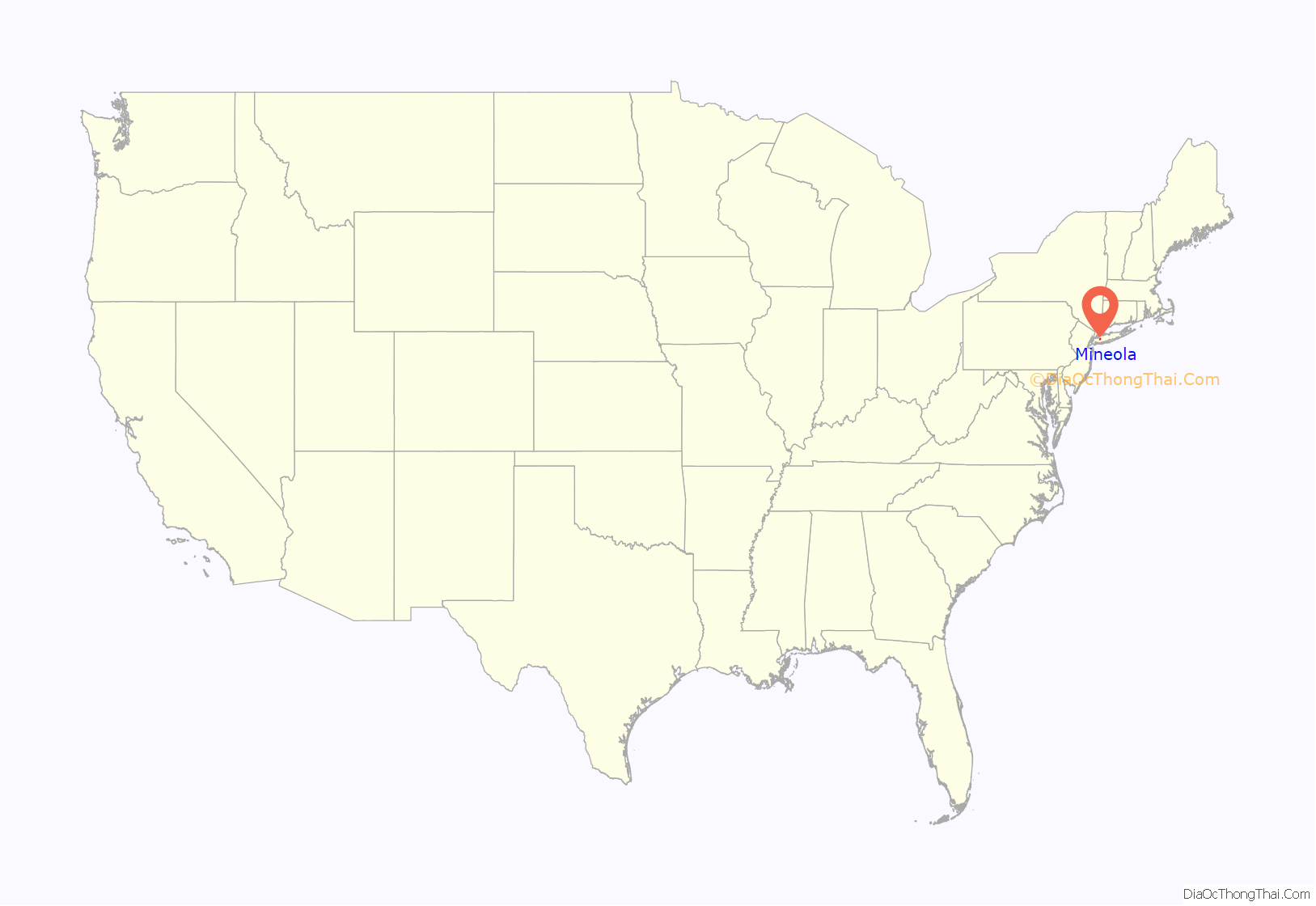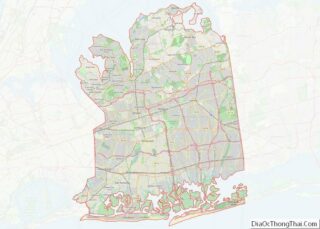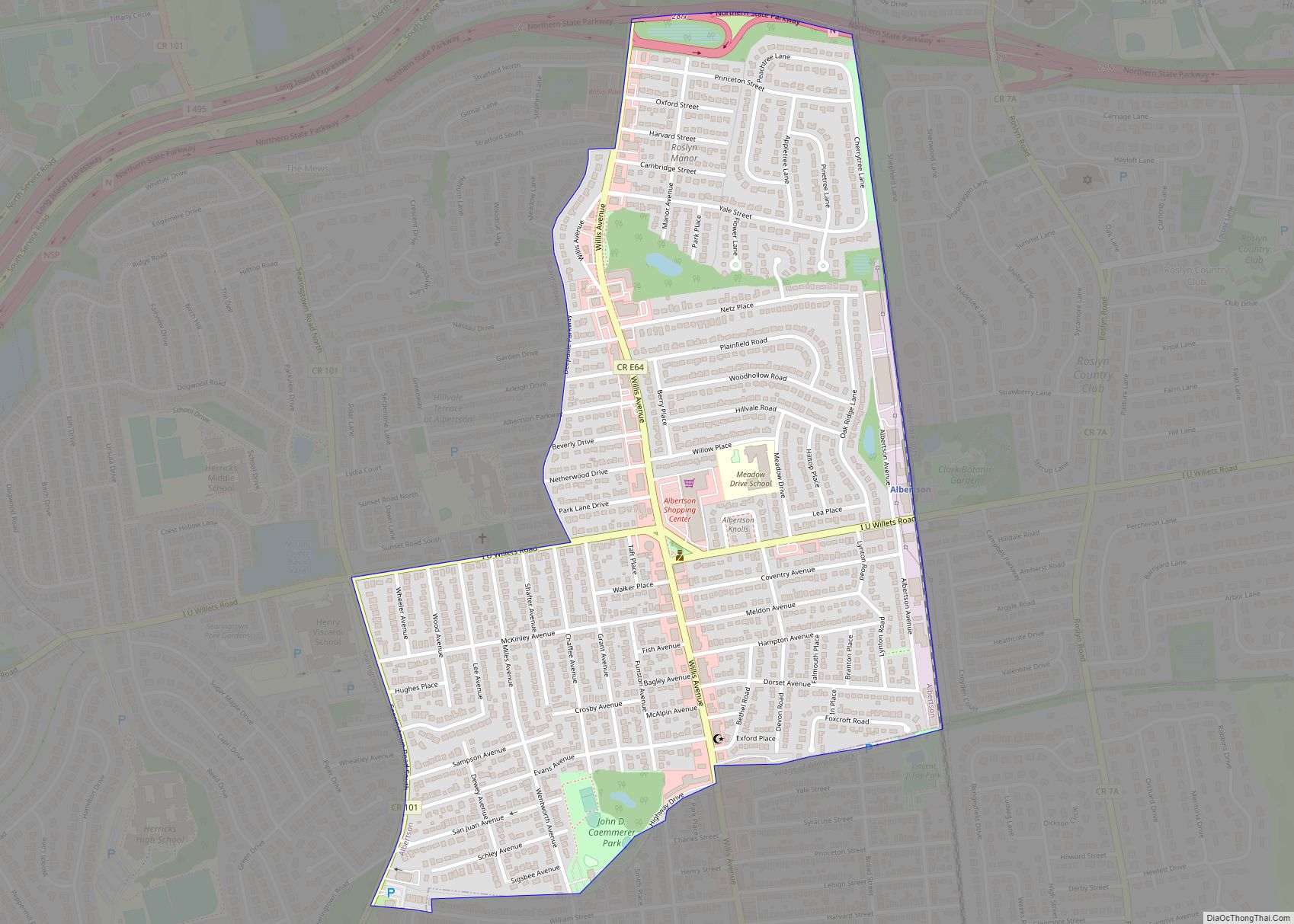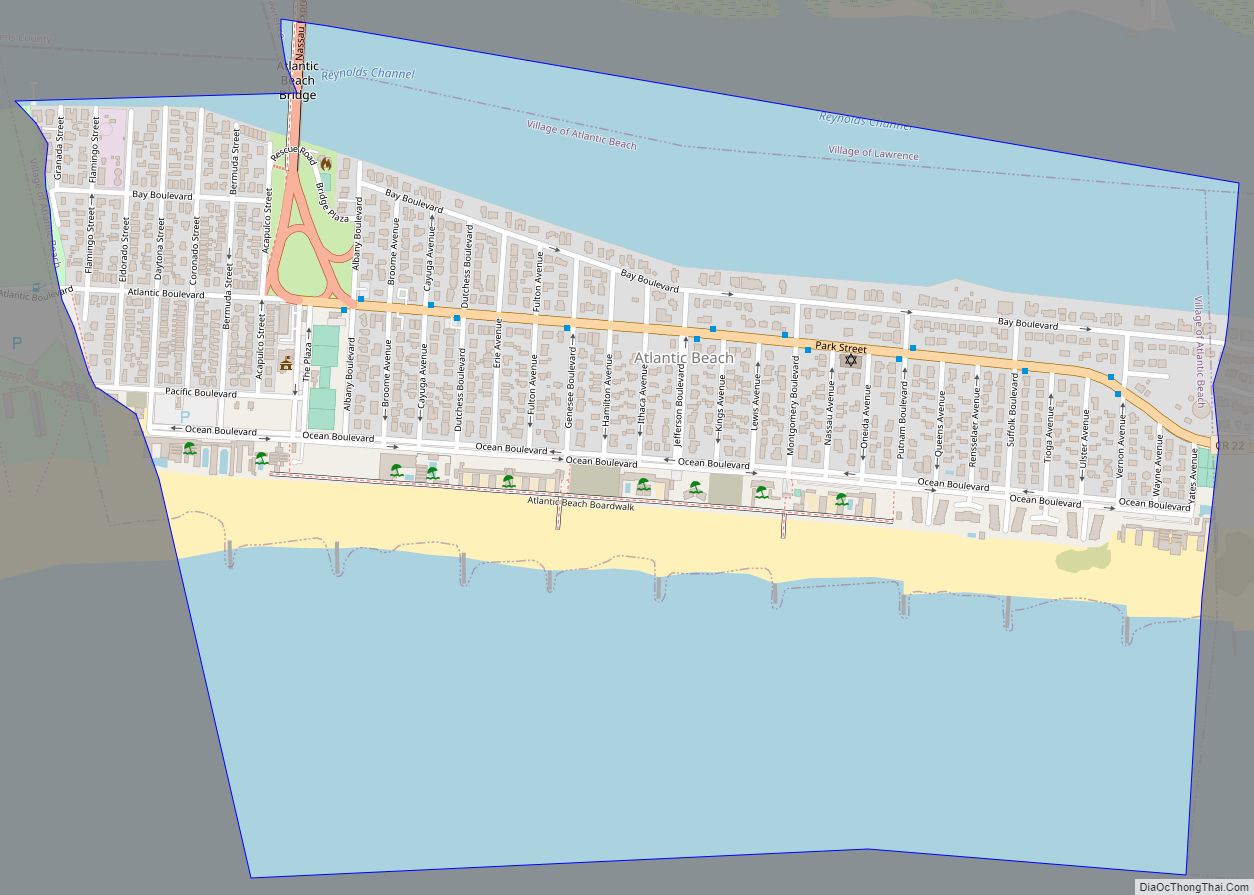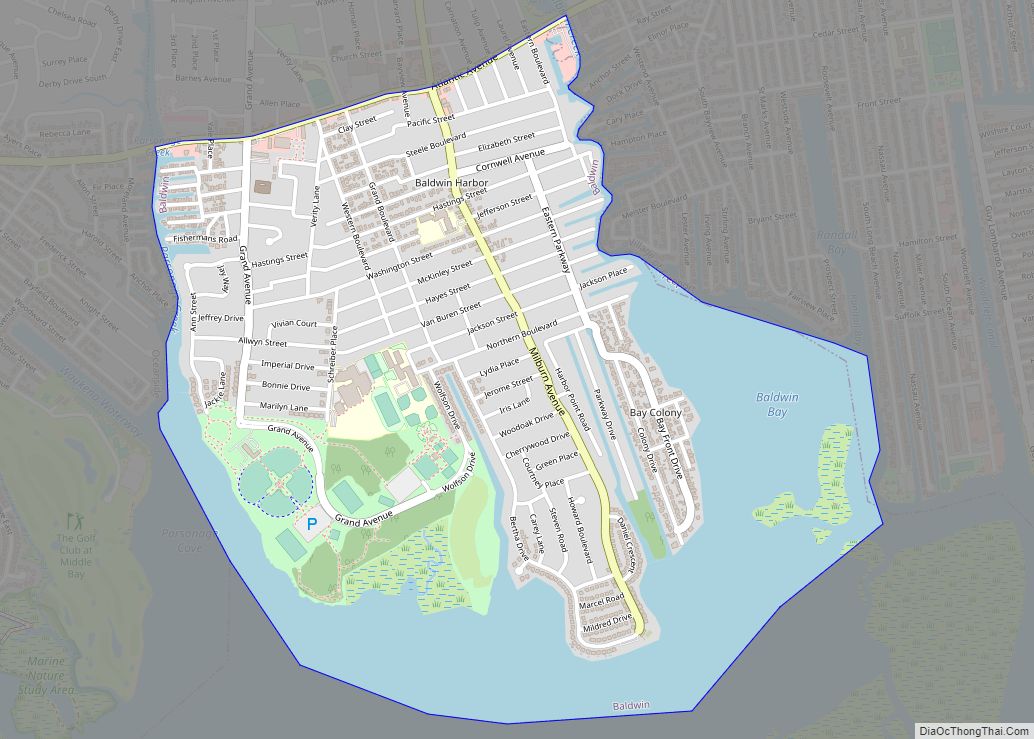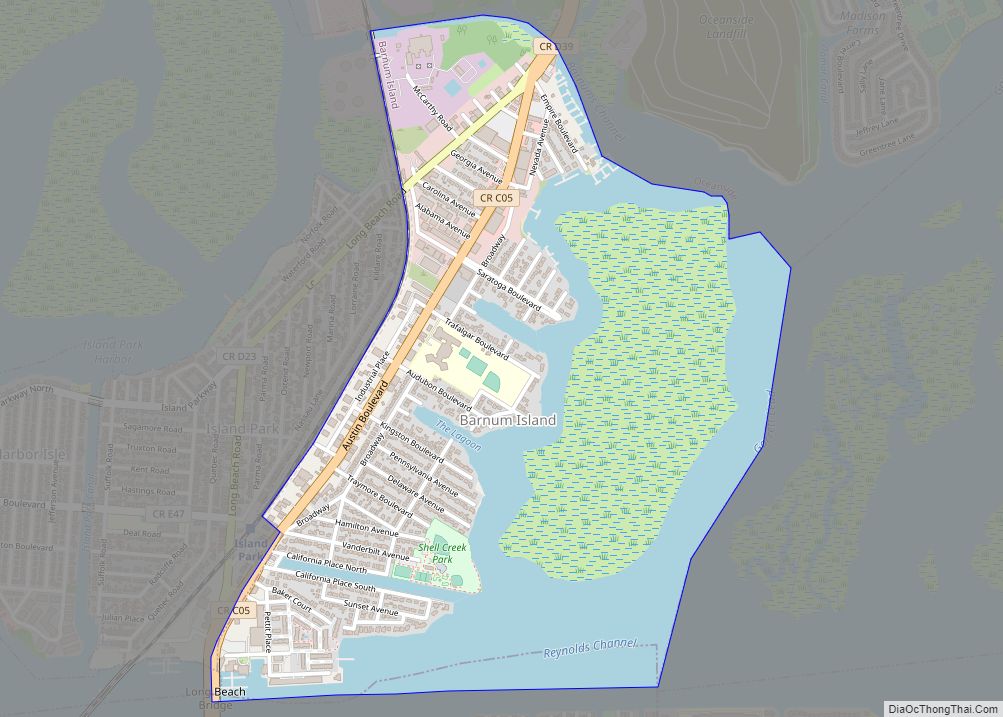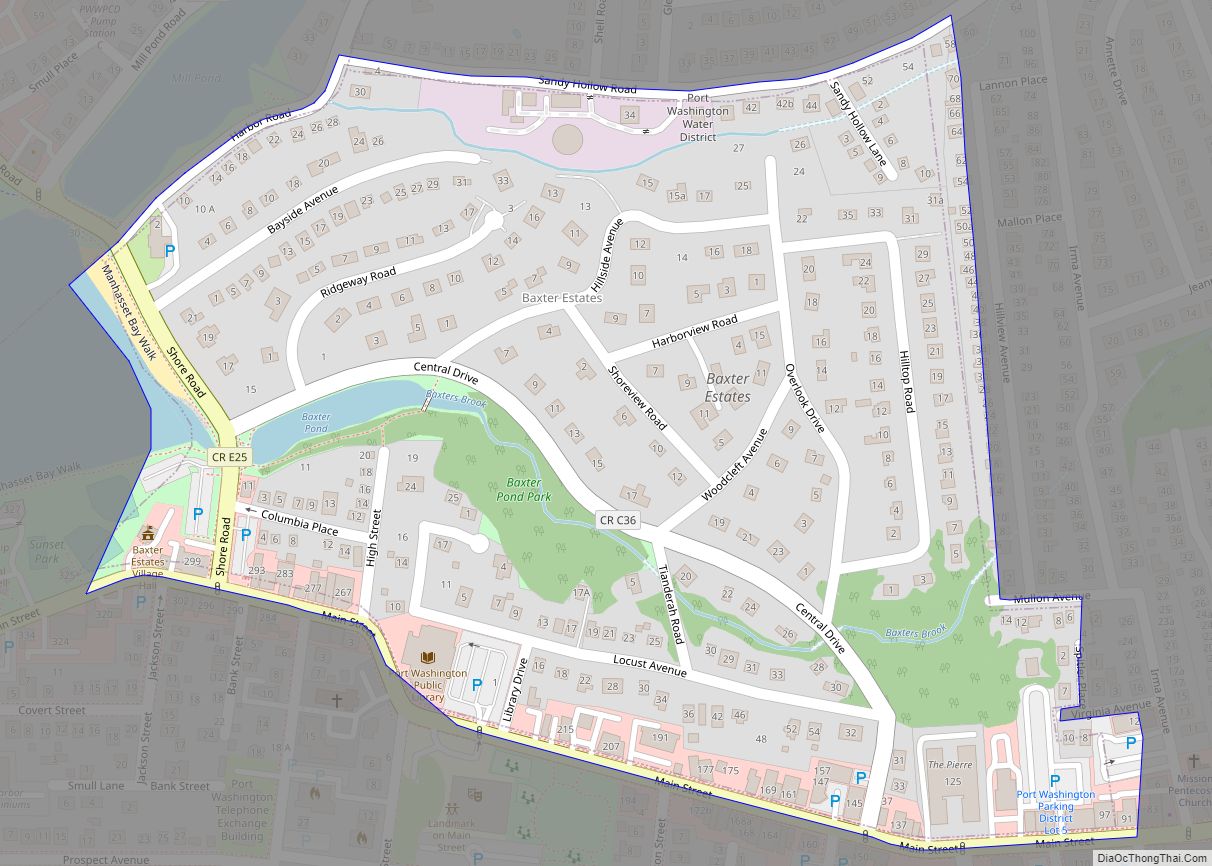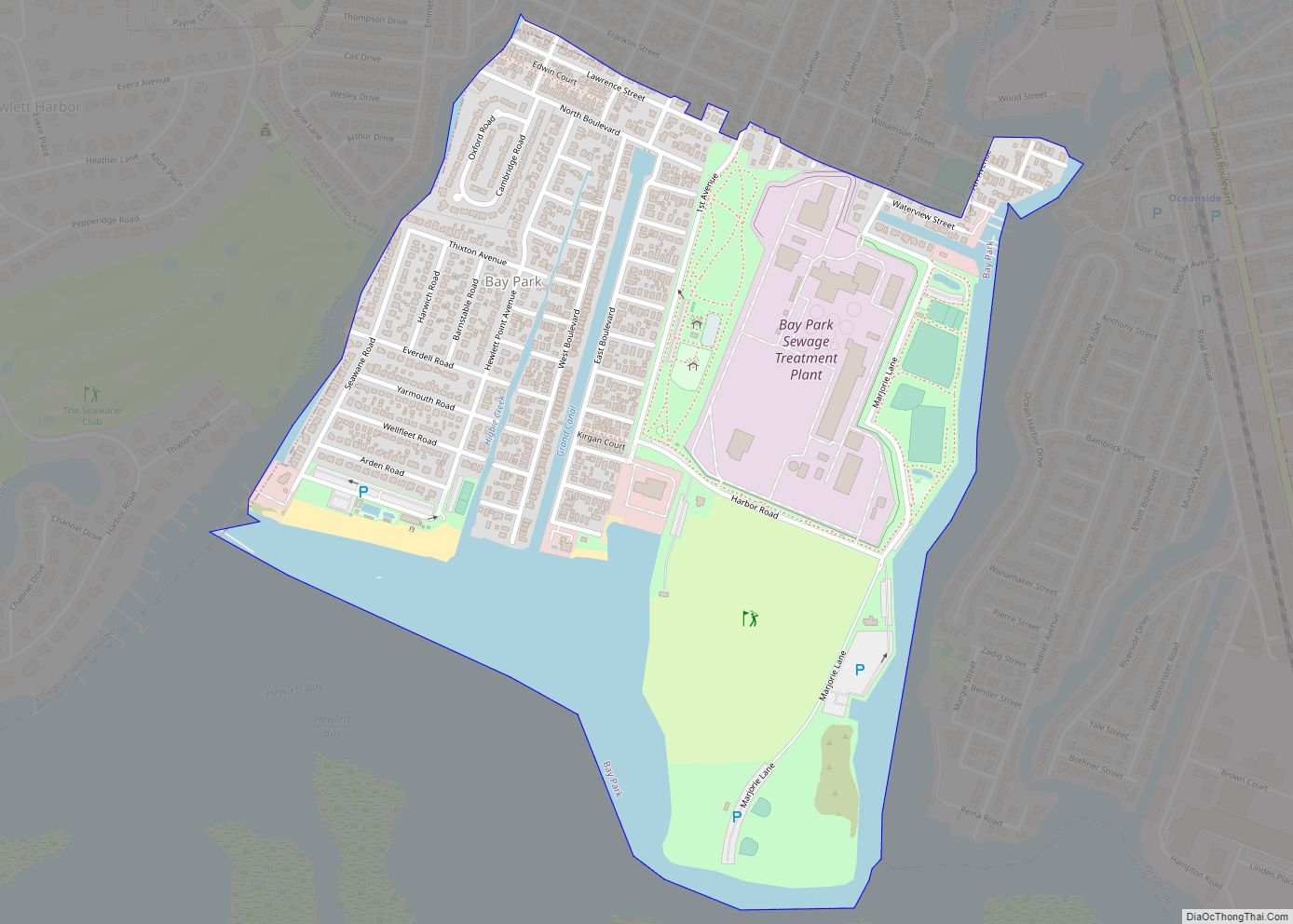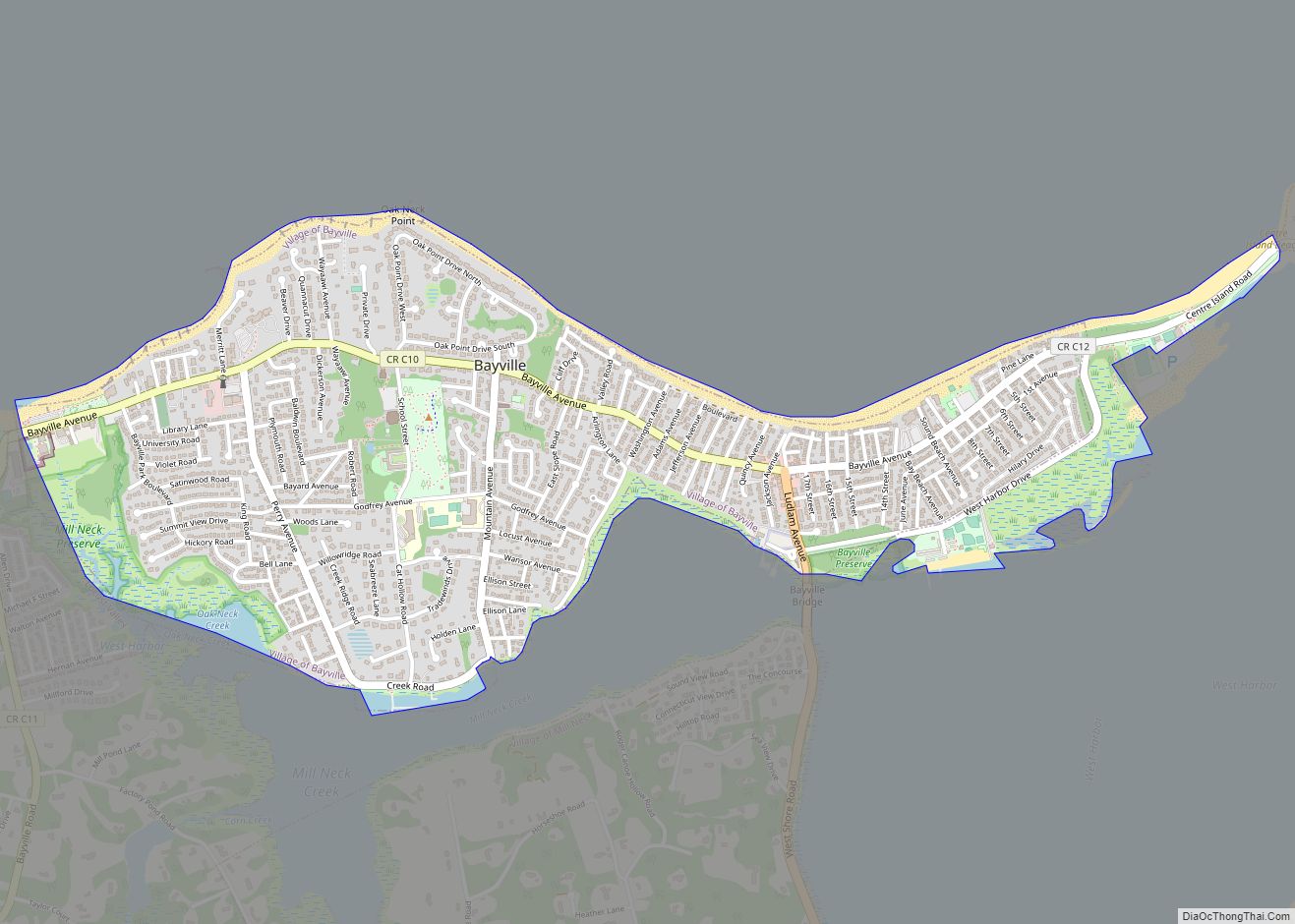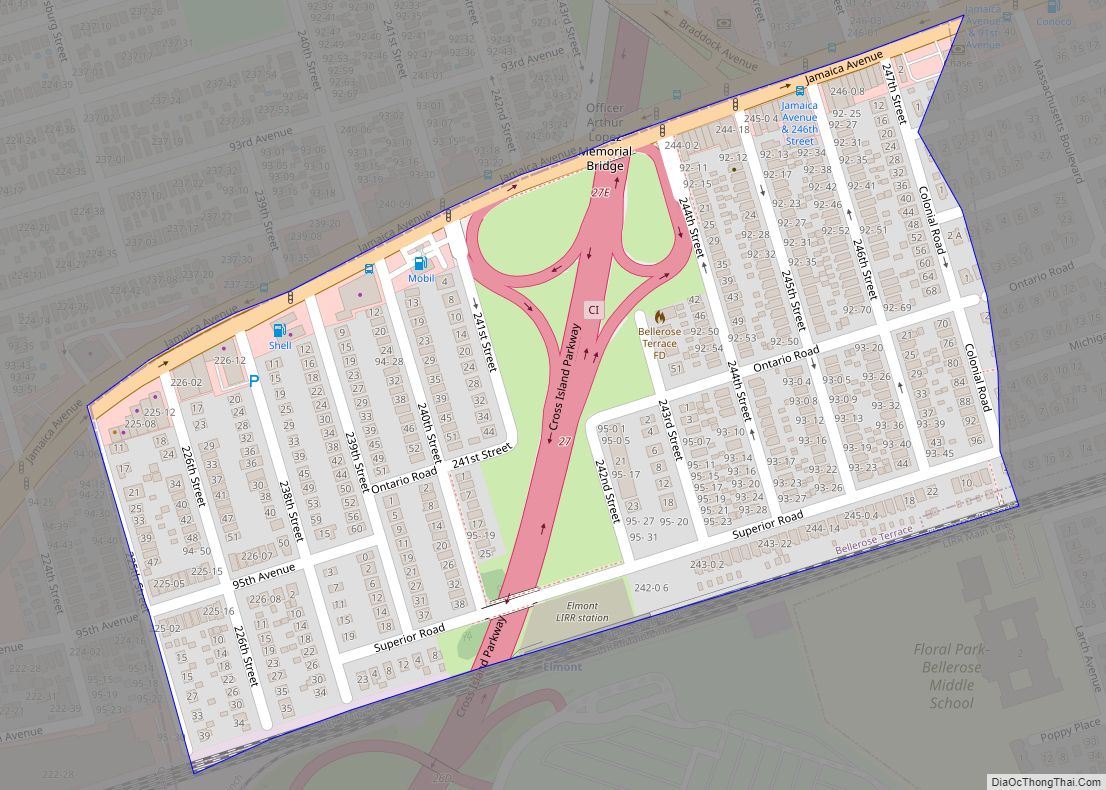Mineola is a village in and the county seat of Nassau County, on Long Island, in New York, United States. The population was 18,799 at the 2010 census. The name is derived from an Algonquin Chief, Miniolagamika, which means “pleasant village”.
The Incorporated Village of Mineola is located primarily in the Town of North Hempstead, with the exception being a small portion of its southern edge within the Town of Hempstead. Old Country Road runs along the village’s southern border. The area serviced by the Mineola Post Office extends farther south into the adjacent village of Garden City, where the Old Nassau County Courthouse is located. Offices of many Nassau County agencies are in both Mineola and Garden City.
| Name: | Mineola village |
|---|---|
| LSAD Code: | 47 |
| LSAD Description: | village (suffix) |
| State: | New York |
| County: | Nassau County |
| Incorporated: | 1906 |
| Elevation: | 108 ft (33 m) |
| Total Area: | 1.85 sq mi (4.79 km²) |
| Land Area: | 1.85 sq mi (4.79 km²) |
| Water Area: | 0.00 sq mi (0.00 km²) |
| Total Population: | 20,800 |
| Population Density: | 11,237.17/sq mi (4,338.39/km²) |
| ZIP code: | 11501 |
| Area code: | 516 |
| FIPS code: | 3647636 |
| GNISfeature ID: | 0957391 |
| Website: | www.mineola-ny.gov |
Online Interactive Map
Click on ![]() to view map in "full screen" mode.
to view map in "full screen" mode.
Mineola location map. Where is Mineola village?
History
The central, flat, grassy part of Long Island was originally known as the Hempstead Plains. In the 19th century, various communities were started in this area. One of those communities was called “Hempstead Branch,” which would ultimately be known as “Mineola” later on.
Long Island was part of Henry Hudson’s original claim in the name of the Dutch East India Company dating as far back as 1609. In the 18th century, the Dutch and English settlers worked to clear farmland to start their life on the Hempstead Plains. It was in 1858 when this land was named after an Algonquin Indian Chief, Miniolagamika meaning, “Pleasant Village”. The name was later shortened and altered to “Mineola”.
From about 1787 until the 1870s, the area was the county seat for Queens County, in a section then known as Clowesville, just outside the present village boundaries. The western portion of Queens became a borough of New York City in 1898, and in 1899 Nassau County was formed from the part of Queens that did not so consolidate. Voters selected Mineola (in the Town of North Hempstead) to be the county seat for the new county of Nassau in November 1898 (before Mineola incorporated as a village in 1906 and set its boundaries), winning out over Hicksville and Hempstead. The Garden City Company (founded in 1893 by the heirs of Alexander Turney Stewart) donated four acres of land for the county buildings just south of the Mineola train station and the present day Village of Mineola, in the Town of Hempstead.
Mineola officially became the County Seat of Nassau County on July 13, 1900, as Governor Theodore Roosevelt laid the cornerstone of the Nassau County Court House. A celebration was held to commemorate the occasion on the barren 5-acre (20,000 m) site at the corner of Old Country Road and Franklin Avenue. Many dignitaries were present to witness this event such as Frederick Hicks, Congressman Townsend Scudder, Colonel William Youngs and Supervisors William Jones and Edwin Willits.
Mineola was legally incorporated as a village in 1906 and run by a president. The land on which the County buildings sat was not included as part of the village. The land and the buildings have a Mineola postal address, but are within the present day Village of Garden City, which did not incorporate or set its boundaries until 1919.
NYU Langone Hospital – Long Island, founded in 1896 by local physicians and residents as Nassau Hospital, and later Winthrop-University Hospital, was Long Island’s first voluntary hospital. In 1897, it admitted 91 patients, performed 27 operations, and reported two births and eight deaths during the first year. The original hospital was constructed in 1900. Renamed Winthrop in the 1980s, it is now a nationally recognized award-winning hospital and in 2004 was ranked among the Top 5 Percent of Acute-Care Hospitals in the Country.
In 1888, the Mineola Fire Department was formed in the Willis Ave School house. The department soon moved to a location on Washington Ave.
Mineola was also a familiar place to many of the most famous pilots in history. The Aero Club of America chose the area for the level plains. Glenn Curtiss brought the area to national attention in July 1909 with his second Scientific American Award flight of over 23 minutes and 15 miles. He also made some of the first public flights in America in his “Golden Flyer”, while practicing for the Reims Aviation Meet in France. The Wright Brothers, Igor Sikorsky, Captain Rene Fonck, and the famed duo of Clarence Chamberlain and Bert Acosta, dubbed “twins of derring-do”, all spent time in Mineola taking advantage of the rolling grasslands and favorable winds.
On November 1, 1915, Captain Raynal Cawthorne Bolling—a prominent New York attorney working at United States Steel—organized the Aviation Detachment, 1st Battalion Signal Corps of the New York National Guard (now the 102d Rescue Squadron). It was the Guard’s first genuine aviation unit. Subsequently, the organization was redesignated the 1st Aero Company. Located at Mineola on Long Island, the unit rented and then purchased its own aircraft with funds donated by the Aero Club of America and other contributors. It was “provisionally recognized” on June 22, 1916, and then called into federal service on July 13, 1916, during the Mexican border crisis. However, instead of active service in the southwest, it remained at Mineola training and was released from federal service on November 2, 1916.
After World War I, the British Royal Navy rigid airship R34 made the first-ever east–west aerial crossing of the North Atlantic, traveling from the airship base at RAF East Fortune in the UK to Mineola from July 2 to July 6, 1919.
On May 20, 1927, at 7:52 a.m., Charles Lindbergh started his historic flight from nearby Roosevelt Field. Thirty-three hours later he landed in Paris and became the first person to complete a solo flight from the United States across the Atlantic Ocean.
The Mineola Hotel burned down in 1966 as the result of arson. One man was killed.
Main Street was the center of village business as well as a popular meeting place for farmers and the business community alike. The general store offered an array of goods that would fulfill most everyday needs, such as hardware, toys, wool, dry goods, clothing and food. The small glass-fronted mail and delivery boxes filled the existing six-foot post office. As the Mineola population grew, the post office was relocated to the Meyer Building on Mineola Boulevard and then twice more to 3rd Street and 2nd Street. It eventually found its permanent home on 1st Street and Main Street.
Mineola’s first theatre named Allen’s Hall drew in many early moviegoers to see “the flickers”. Motion picture success drew in other theaters to the area, the most lavish being the Century Opera House. Most theaters had a showing in the morning and in the evening, usually featuring a live pianist who kept up with the action of the movie while playing music that suited the story.
As years passed, Jericho Turnpike became the commercial “main street”. Farmland was sold off and homes and offices were built. Mineola has continued to be a community of growth and development.
Mineola held its centennial celebration in 2006.
Mineola is home to large Portuguese communities, and has been for years. Portuguese restaurants and businesses and the Portuguese language are a common feature throughout the neighborhood.
Mineola Road Map
Mineola city Satellite Map
Geography
According to the United States Census Bureau, the village has an area of 1.9 square miles (4.9 km), all land.
The villages bordering Mineola are Garden City, Old Westbury, East Williston, and Williston Park. Mineola also borders the hamlets (CDP) of Carle Place, Garden City Park, Herricks, and Roslyn Heights.
The village gained territory between the 1990 census and the 2000 census.
Near the center of the village, Mineola Memorial Park commemorates the victims of the September 11 terrorist attacks with a monument. Mineola’s own Memorial Library and private and public schools adjoin the park. The Memorial Tablet and surrounding paths were an Eagle Project by Troop 45 Eagle Scout Edward Kaiser.
Climate
See also
Map of New York State and its subdivision:- Albany
- Allegany
- Bronx
- Broome
- Cattaraugus
- Cayuga
- Chautauqua
- Chemung
- Chenango
- Clinton
- Columbia
- Cortland
- Delaware
- Dutchess
- Erie
- Essex
- Franklin
- Fulton
- Genesee
- Greene
- Hamilton
- Herkimer
- Jefferson
- Kings
- Lake Ontario
- Lewis
- Livingston
- Madison
- Monroe
- Montgomery
- Nassau
- New York
- Niagara
- Oneida
- Onondaga
- Ontario
- Orange
- Orleans
- Oswego
- Otsego
- Putnam
- Queens
- Rensselaer
- Richmond
- Rockland
- Saint Lawrence
- Saratoga
- Schenectady
- Schoharie
- Schuyler
- Seneca
- Steuben
- Suffolk
- Sullivan
- Tioga
- Tompkins
- Ulster
- Warren
- Washington
- Wayne
- Westchester
- Wyoming
- Yates
- Alabama
- Alaska
- Arizona
- Arkansas
- California
- Colorado
- Connecticut
- Delaware
- District of Columbia
- Florida
- Georgia
- Hawaii
- Idaho
- Illinois
- Indiana
- Iowa
- Kansas
- Kentucky
- Louisiana
- Maine
- Maryland
- Massachusetts
- Michigan
- Minnesota
- Mississippi
- Missouri
- Montana
- Nebraska
- Nevada
- New Hampshire
- New Jersey
- New Mexico
- New York
- North Carolina
- North Dakota
- Ohio
- Oklahoma
- Oregon
- Pennsylvania
- Rhode Island
- South Carolina
- South Dakota
- Tennessee
- Texas
- Utah
- Vermont
- Virginia
- Washington
- West Virginia
- Wisconsin
- Wyoming
